
Kim Chang-shik, left, and his wife, Yoon Yeo-rim, of Seoul adopted their daughter, Kim Ih-rin, top right, after first having a son, Kim Shi-eon.

Korea Aims to End Stigma of Adoption and Stop ‘Exporting’ Babies
By NORIMITSU ONISHI
Published: October 9, 2008
Last year, for the first time, more babies here were adopted by South Koreans than foreigners and the government has set a goal of eliminating foreign adoptions altogether by 2012.
SEOUL, South Korea — Daunted by the stigma surrounding adoption here, Cho Joong-bae and Kim In-soon delayed expanding their family for years. When they finally did six years ago, Mr. Cho chose to tell his elderly parents that the child was the result of an affair, rather than admit she was adopted.
“My parents later died believing that I’d had an affair,” said Mr. Cho, 48, a civil engineer who has since adopted a second daughter.
Now, with South Korea becoming more accepting of adoptive families, Mr. Cho and Ms. Kim feel they can be more open, with relatives and nonrelatives alike. Ms. Kim, 49, attributed the change partly to the growth of other nontraditional families, like those headed by single parents or including foreign spouses.
“We feel attitudes have changed,” she said.
Just how much, though, is the critical question as the South Korean government is pushing aggressively to increase adoptions by South Koreans and decrease what officials consider the shameful act of sending babies overseas for adoption. Since the 1950s, tens of thousands of South Korean children have been adopted by foreigners, mostly Americans, because of South Koreans’ traditional emphasis on family bloodlines and reluctance to adopt.
But last year, for the first time, more babies here were adopted by South Koreans than foreigners, as the government announced recently with great fanfare: 1,388 local adoptions compared with 1,264 foreign ones. What is more, South Korea — which still is one of the top countries from which Americans adopt — has set a goal of eliminating foreign adoptions altogether by 2012.
“South Korea is the world’s 12th largest economy and is now almost an advanced country, so we would like to rid ourselves of the international stigma or disgrace of being a baby-exporting country,” Kim Dong-won, who oversees adoptions at the Ministry of Health, said in an interview. “It’s embarrassing.”
To bolster domestic adoptions, the government last year began offering $90 monthly allowances per child for those who adopt children up to 12 years old, as well as more generous health benefits for the children. Even greater health benefits are now given to adopted disabled children.
The government also made it easier for South Koreans to adopt. Single people can now qualify, as well as older ones. Until last year, prospective adoptive parents could be no more than 50 years older than the child; now the age gap has been increased to 60 years. In addition, the government has made foreign adoptions more difficult by imposing a five-month waiting period before children can even be considered for overseas adoption. It also increased payments to foster parents to try to keep children inside South Korea longer and increase their chances of being adopted domestically.
The government’s goal has received much media attention and popular support here. But adoption agencies and some adoptive parents and experts say the government’s new policies are concerned less with the children’s welfare than with saving face. Increasing the age gap and allowing singles to adopt have lowered the standards for domestic adoptions in a way that could be detrimental to the children, they say, even as the government has created unnecessary obstacles to foreign ones.
“The government is hung up on numbers and on South Korea’s image,” said Lee Mira, who oversees domestic adoptions at Social Welfare Society, a private, nonprofit organization that is the second largest adoption agency in South Korea. “When North Korea taunts South Korea by saying we’re selling Korean babies to foreigners, it hurts the pride of South Korea.”
Since 1958, when South Korea began keeping track of adoptions, 230,635 children have been adopted. About 30 percent were adopted by South Koreans, while 70 percent found homes overseas. Two-thirds of all foreign adoptees ended up in the United States.
While orphans made up a majority of adopted children in the two decades following the Korean War, children born to unwed mothers have accounted for the largest numbers since then.
South Koreans who did adopt tended to hide their children’s origins from the children and others.
In recent years, adoption agencies have conducted campaigns — some featuring movie and TV stars — urging adoptive parents to tell people about how their families were formed in the hopes that more openness would lead to less prejudice. The government’s efforts got a boost when some celebrities adopted and went public with the news.
Still, many adoptive parents choose not to share how their families were formed, according to adoption agencies, with some engaging in elaborate ruses to pass off the children as their biological sons or daughters.
A middle-aged couple now living in a suburb of Seoul learned long ago that the husband was sterile. But he was reluctant to consider adopting, unwilling to accept his condition and afraid of the lingering prejudice against adopted children. In a Confucian society that still values bloodlines, where many people keep detailed records of their ancestors, he was worried that adopted children might face difficulties in their careers or with marriage prospects.
So when the couple decided to adopt three years ago, they chose to fake a pregnancy, as many adoptive parents here do. The couple moved, and the husband, now 43 and a real estate agent, switched jobs.
The wife, an employee at a telecommunications company, began wearing maternity clothes over a special pillow, made by a company recommended by the couple’s adoption agency.
All was going well until a colleague the woman had confided in spilled the secret to a supervisor.
“I was so hurt and embarrassed by that experience,” she said. “I would like to adopt a second child, if only to go through the experience in a proper manner this time.”
Given the bias against adoptions, some couples who are initially open become more guarded as their children grow older.
Yoo Hae-yon, 48, has told relatives and neighbors that his two sons, now 4 years old and 18 months, were adopted. But he has since become worried that the boys will suffer in a society where television shows typically portray adopted children negatively, as schemers who end up damaging families.
“My sons haven’t been teased yet, but that will be a possibility in elementary school,” Mr. Yoo said. “So once they start school, we won’t disclose their adoptions. And in junior high school or later on, we’ll let them decide.”
Holt International, a private American adoption agency that has long been South Korea’s leading agency, welcomed the government’s new financial incentives for families but said that trying to curb foreign adoptions would risk hurting the children least likely to be adopted by South Koreans: older ones; the disabled, who still face severe discrimination; and boys, who, once preferred by South Koreans, are now considered by many to be less devoted to their parents than daughters.
“The changes could end up postponing the adoption process of those children,” said Lee Jin-hee, who oversees domestic adoptions at Holt here.
And Huh Nam-soon, dean of the social welfare department at Hallym University outside Seoul, said changing the standards for domestic adoptions could cause serious problems in the future.
“How many of those adopted children will end up in orphanages because of broken adoptions?” she said.
Ms. Huh, who has researched the history of South Korean children adopted by Americans, said that, in general, they had found good homes in the United States, even though some struggled with their identities.
Mr. Kim, the Health Ministry official, acknowledged that the history of American adoption had been largely positive. But he said that the government believed that South Korean children would be happier if adopted by South Koreans and that it would stick to its goal of phasing out foreign adoptions in four years.
Agencies and adoptive parents said the goal was unrealistic, if only because very few disabled children had been adopted here. Last year, only 40 disabled children were adopted domestically, while 500 went abroad.
“We wouldn’t feel confident adopting a disabled child since we even felt overwhelmed adopting a healthy one,” said Kim Chang-shik, 37, who, with his wife, Yoon Yeo-rim, 38, adopted a daughter four years ago, after the birth of their biological son. “I don’t know whether it’s because I’m Korean, but I’m grateful that foreigners are willing to adopt children who can’t find homes here.”













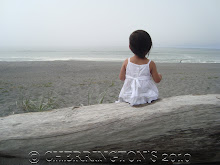

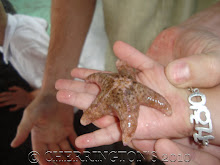
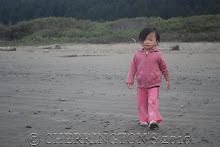
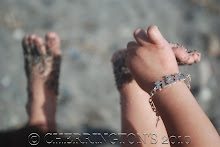
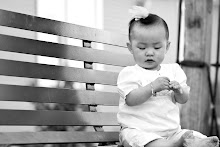
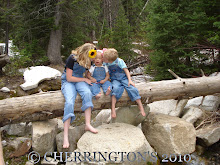
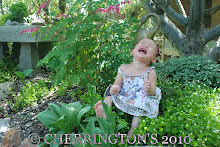
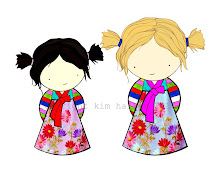





No comments:
Post a Comment